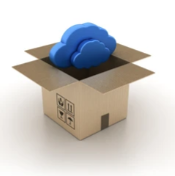 Migration to the cloud is the transition process that many companies have carried out, changing from the traditional computing model, which relies on storing data and systems in physical environments (local servers, HD) to using data and installing systems on servers in the cloud.
Migration to the cloud is the transition process that many companies have carried out, changing from the traditional computing model, which relies on storing data and systems in physical environments (local servers, HD) to using data and installing systems on servers in the cloud.
Many of these cloud solutions also have a licensing model called SaaS – Software as a Service. In this new model, the company, instead of paying the costs of a lifetime license, hires – as if it were a lease – the rights to use a certain system until when it seems useful.
Migrating to the cloud is a trend that is here to stay thanks to numerous advantages that this service can provide: cost reduction, process optimization and security guarantees.
However, a cloud migration project, in addition to having an expert partner in the subject, needs to consider some specific aspects:

1) There are a multitude of cloud services that are offered to the market. One of the strengths is the scalability and flexibility of the solution, as well as the type of computing that needs to be contracted: hybrid, public or private solution. Be aware when contracting the service from your cloud provider.
2) Make a good project planning: what systems/services will be migrated and what is the migration schedule. Do not underestimate the testing steps, especially when dealing with existing integrations with legacy systems. These integrations will likely need to be “pointed” to the new cloud environment and require testing. In fact, any system or service to be migrated needs to be homologated before the traditional model is shut down. Assertive planning minimizes project risks
3) As with all new technology, the people who will operate it need to be trained on the new platform. Make sure your IT team is prepared for this new challenge. MPL is Oracle's IaaS Specialist, and we have the experience of several successful projects, whether using the Oracle cloud itself, or using other cloud computing providers on the market. Count on us.